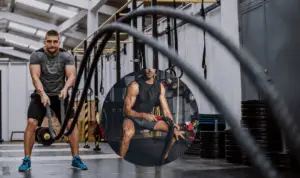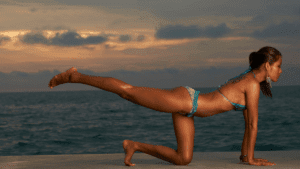As a novice, or a beginner, embarks on yoga, he or she may ask herself, what is the use of yoga blocks? In the execution of yoga postures, there are many poses to do and to perform; however, there are only handful of yoga accessories we can think of, such as but not limited to, yoga mat and yoga blocks. Therefore, in this article, we shall tackle how to use yoga blocks.
Although, a yoga mat is a borderline essential accessory in yoga practice, what about yoga blocks? How are they important in yoga exercises? Are they really necessary?
Besides being considered only as props–while in the real sense it is an exercise tool or equipment–the primary objectives of using yoga blocks are as follows, to wit:
- To be able to perform an otherwise difficult stretch in yoga pose
- To support such stretch, thus, preventing injuries
- To help practitioners to easily transition from pose to pose and from being a beginner to a next level yogi
The above objectives will help you comprehend the usability of yoga blocks in the practice of yoga, the need of having them, and the support and benefits they can provide to yogis.
Being able to understand such purposes, you will now have the capacity to know and discern, as you advance in your level, the exigency and the pattern to utilize such pieces of exercise equipment.
The Benefits of Using Yoga Blocks | Exercise Tools at Your Disposal
Just like in dieting where there are guilty moments, when at some point you satisfy your food cravings, the same maybe true with yoga blocks.
You are cheating your stretch so to speak, according to others. However, we think, it is just a matter of perspective.
On the other hand, for the yogis themselves, they will think that they are not the true-blue ones, or so they believe.
Popularity of yoga blocks
However, yoga blocks are popular among yoga classes, whether streaming or instructor-to-students physical sessions. This is especially true for beginners.
In the days of allowed live and face to face yoga sessions, the students will normally get all the blocks available, leaving the storage empty.
Its different colors add to the lively atmosphere of yoga sessions.
Exercise Equipment | Not Merely Disposable Props
Nowadays, you can see, and it is even safe to assume, that almost all yoga practitioners at some moments have used, or even continuously have been employing, the said blocks in their workout sessions.
Therefore, we can say that the use thereof is not synonymous with cheating.
Yoga blocks are pieces of utility; an equipment that is needed to execute and finish something.
In this line of thought, it is clear that the same are tools, which will assist you to finish a certain task.
We hear the word “props” as the term applies to yoga accessories. Nonetheless, knowing the usability of such blocks, they should be called tools or pieces of equipment rather than mere “props” [to give them the recognition they deserve in the yoga world].
In all honesty, the meaning of “props” seems to be like disposable things.
For all we know, it is but common that, in almost a number of common tasks, they necessarily have utility equipment to complete the job.
- Thus, if you want to change tires, you need a jack or lifter to raise the vehicle up.
- When you are cleaning the floor of your house to remove dirt, it is convenient to use a vacuum cleaner.
- If you want to chop woods for your fireplace, you need axe.
These are activities that require tools and equipment to accomplish the same.
As we discussed, yoga blocks are pieces of exercise equipment and also an exercise tool, not sheer disposable “props”.
Yoga Blocks are Portable | Can Assist You in Yoga Poses | Help You Build Strength
Aside from branding yoga blocks as utility equipment, we can consider them, likewise, as gears.
In any activity, particularly in sports, use of gears is a must; thus, the blocks may be considered as gears.
Other types of yoga also require additional gear or exercise equipment.
Say for example in practicing complex types of yoga, you may find that practitioners also use other helpful accessories such as harness, chairs, cushion, blankets, ropes, and other similar tools.
Other yoga practices, nonetheless, only require the blocks and the mat.
Want to seamlessly do yoga postures? | Here is how you should use yoga blocks
Yet, then again, are yoga blocks indispensable? Why do you want to utilize them?
They are absolutely awesome! It is of great help and assistance, let alone support.
These exercise accessories make it possible for beginners to execute yoga poses. Even at first, it is very hard to do so.
Furthermore, these blocks offer protection in preventing injuries as a result of steep stretches, which you cannot, otherwise, do without their help and assistance.
As a start, you, being a beginner to yoga practice, will carry the notion that yoga is a form of stretches and flexes.
Indeed, it is. You will be exposed to all the twisting, extending, flexing, unimaginable stretches, bends, and folds.
Then, you will exclaim, yoga is hard! Yoga is difficult! How can I do those stretches?
Fear not novice yogi, yoga blocks are here to the rescue. These exercise tools will instantly find its relevance, as it will help you gain the traction of eventually mastering those poses.
Steep Stretches May Result to Injury | Yoga Blocks | Beginners’ Ally | Promotes Safe Practice
Doing standing or seated forward bend, for example. You are instructed to reach for your toes, or even only your toe nails.
When you are only starting out, this will be difficult. Hence, when performing the standing forward bend and being ask to touch your toes, yoga blocks may offer help to get you on track.
In this scenario, the possible cause why a beginner may have difficulty in reaching for her toes is the want of mobility in the hip area.
Limited range of motion as a result of stiff body may also be one of the reasons.
Sedentary Life
Most of the people, prior to deciding to do yoga, may have a sedentary life. Office works are most common, where one will sit for the whole day or long hour period.
Being in these situations, most of the time in their existence, will necessarily result into hip stiffness or rigidness. This can affect its flexibility.
Continuous and Constant Yoga Practice
On the other hand, what is great is that continuous yoga practice will correct this lack of flexibility. In the course of your yoga journey, you will eventually notice that the poses you cannot do before, or are having difficulty in executing the same, will become realistically possible now.
Yoga Executions without Aid
Still, many starters do want to really perform the poses without any aid. Here are the most common circumstances.
They flex, extend, reach, yet forcing, without proper use of their muscles or joints. This is a bad idea. Appropriate stretches require the use of proper muscle, body area, or joints.
When your hips cannot reach far anymore, do not force it. It may result to injury. Use other muscle or body area to fulfill the stretch, in this case, the back region of your body.
However, using your back now to fulfill the bend may as well pose a problem. Most of the people have feeble backs, newbie in yoga, not exempted.
Thus, folding the back to the extent of reaching the toes may prove difficult, albeit initially during the early stage of your yoga journey.
This happens because of the maximum load exerted on your back at this juncture. This will invite injury in the process.
When Doing Yoga, You Need to, at the very least, Forestall Injury or Damage to Your Muscles and Joints
When you exercise, you do want a result that is best for you. Obviously, you do not want to suffer injuries, as the same are the least that you expect.
Disaster or otherwise, as a result of wrong execution, you need to obviate that eventuality as much as you can.
What are yoga blocks for? | Prevent injuries upon yourself
Now, in your yoga endeavor, especially if you are a beginner, how will you do it? The plausible answer would be is that you have to use first yoga blocks[1]10 Ways to Use Yoga Blocks to Release Tight Muscles to aid your extended flexes.
The sure outcome of using them is that you can “bring” the floor closer to you. There, it would be seamless when you do a posture that will not, then, be possible without the use of blocks.
Standing Forward Bend
Just the same, however, in the above bend [standing forward fold], you are not touching your toes but only the blocks.
Some will say “Oh, is it a correct yoga execution? I never touch my toes!”. It is correct; you did not touch your toes. However, there is still a benefit for you on that note.
Forestalling Injury
By doing this and using yoga blocks, you place yourself in a situation where you can be free from any injury or prevent it from happening.
Without the tools, you will be forced to reach down even if you cannot anymore, thereby, turning your back strenuously.
On the other hand, with the equipment, you are on the safe side but without compromising the proper posture.
How to use yoga blocks? | Proper Posture makes Yoga Effective
Returning to the fold; forward bend is still the subject. When the problem is the difficulty in moving the hip, you have to widen its reach.
However, since you cannot anymore move your hips, you should not, likewise, utilize your back to do the same. In this situation, yoga blocks will be indispensable.
With the blocks at your disposal and use, you can bend properly with your hips and without compromising your back, thereby, preventing injury.
When you get accustomed through continuous practice, your reach will be extended and this will become more natural in the process.
References



